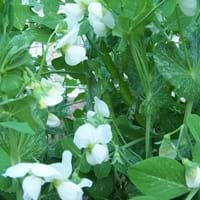Life Span
Biennial and Perennial
Annual
Origin
Europe, Western Asia
Mediterranean
Types
Not Available
cowpea , pigeon pea
Number of Varieties
Not Available
Habitat
waste ground, wastelands
Fields, Loamy soils
USDA Hardiness Zone
4-9
Not Available
Sunset Zone
A1, A2, A3, H1, H2, 1a, 1b, 2a, 2b, 3a, 3b, 4, 5, 6, 7, 8, 9, 10, 11, 12, 13, 14, 15, 16, 17, 18, 19, 20, 21, 22, 23, 24
A1, A2, A3, H1, H2, 1a, 1b, 2a, 2b, 3a, 3b, 4, 5, 6, 7, 8, 9, 10, 11, 12, 13, 14, 15, 16, 17, 18, 19, 20, 21, 22, 23, 24
Habit
Rosette/Stemless
Vining/Climbing
Minimum Width
Not Available
Flower Color
Yellow
White, Pink, Lavender
Flower Color Modifier
Bicolor
Bicolor
Fruit Color
Brown, Black
Green
Leaf Color in Spring
Green
Green, Sea Green, Gray Green
Leaf Color in Summer
Green
Not Available
Leaf Color in Fall
Green
Green, Blue Green, Gray Green
Leaf Color in Winter
Not Available
Green, Blue Green, Gray Green
Leaf Shape
Pinnate
Egg-shaped
Plant Season
Summer
Spring, Fall, Winter
Sunlight
Full Sun
Full Sun, Partial Sun
Type of Soil
Loam
Clay, Loam, Sand
The pH of Soil
Neutral
Neutral
Soil Drainage
Well drained
Well drained
Bloom Time
Summer
Early Spring, Spring, Late Spring, Fall, Late Fall, Early Winter, Winter, Late Winter
Tolerances
Drought
Variety of soil types
Where to Plant?
Ground, Pot
Ground
How to Plant?
Seedlings
Seedlings
Plant Maintenance
Medium
Medium
Watering Requirements
Average Water Needs, Do Not over Water, Keep the ground moist but not water-logged
Do not let dry out between waterings, Needs watering once a week
In Summer
Lots of watering
Consistently
In Spring
Moderate
Adequately
In Winter
Average Water
Less Watering
Soil pH
Neutral
Slightly Acidic
Soil Type
Loam
Clay, Loam, Sand
Soil Drainage Capacity
Well drained
Well drained
Sun Exposure
Full Sun
Full Sun, Partial Sun
Pruning
Remove damaged leaves, Remove dead branches, Remove dead leaves
Remove damaged leaves, Remove dead branches, Remove dead leaves
Fertilizers
All-Purpose Liquid Fertilizer
All-Purpose Liquid Fertilizer, Compost
Pests and Diseases
Aphids, Armyworm, Cutworms, Downy mildew, Pitch canker, Red blotch
Aphids, Leaf curl, Powdery mildew, Red blotch, Root rot
Plant Tolerance
Drought
Light Frost
Flower Petal Number
Not Available
Single
Fragrant Bark/Stem
Yes
No
Foliage Texture
Fine
Medium
Foliage Sheen
Matte
Matte
Attracts
Butterflies
Not Available
Allergy
Stomach burn
Diarrhea, Intestinal gas
Aesthetic Uses
Not Available
Not Available
Beauty Benefits
Blood purifying, Good for skin
For treating wrinkles
Environmental Uses
Air purification
Food for animals
Medicinal Uses
Aphrodisiac
Not Available
Part of Plant Used
Root
Leaves, Seeds
Other Uses
Food for animals, Used as a nutritious food item
Cosmetics, Making Shampoo, Used as a nutritious food item, Used As Food
Used As Indoor Plant
Yes
No
Used As Outdoor Plant
Yes
Yes
Garden Design
Edible, Herb, Vegetable
Container, Edible, Herb, Vegetable, Vine
Botanical Name
PASTINACA sativa
PISUM sativum
Common Name
Parsnip
Garden Pea
In German
Pastinake
Erbse
In Spanish
Chirivía
guisante
In Greek
Είδος δαυκίου
μπιζέλι
In Portuguese
cherivia
ervilha
In Polish
Pasternak
groch
Phylum
Magnoliophyta
Magnoliophyta
Class
Magnoliopsida
Magnoliopsida
Clade
Angiosperms, Asterids, Eudicots
Dicotyledonous
Tribe
Not Available
Not Available
Subfamily
Not Available
Not Available
Number of Species
Not Available
Importance of Parsnip and Garden Pea
Want to have the most appropriate plant for your garden? You might want to know the importance of Parsnip and Garden Pea. Basically, these two plants vary in many aspects. Compare Parsnip and Garden Pea as they differ in many characteristics such as their life, care, benefits, facts, etc. Every gardener must at least have the slightest clue about the plants he wants to plant in his garden. Compare their benefits, which differ in many ways like facts and uses. The medicinal use of Parsnip is Aphrodisiac whereas of Garden Pea is Not Available. Parsnip has beauty benefits as follows: Blood purifying and Good for skin while Garden Pea has beauty benefits as follows: Blood purifying and Good for skin.
Compare Facts of Parsnip vs Garden Pea
How to choose the best garden plant for your garden depending upon its facts? Here garden plant comparison will help you to solve this query. Compare the facts of Parsnip vs Garden Pea and know which one to choose. As garden plants have benefits and other uses, allergy is also a major drawback of plants for some people. Allergic reactions of Parsnip are Stomach burn whereas of Garden Pea have Diarrhea and Intestinal gas respectively. Having a fruit bearing plant in your garden can be a plus point of your garden. Parsnip has no showy fruits and Garden Pea has showy fruits. Also Parsnip is not flowering and Garden Pea is not flowering . You can compare Parsnip and Garden Pea facts and facts of other plants too.





